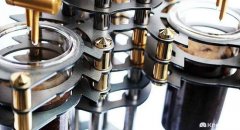Do you want to know how to get a cup of decaf?
Coffee is one of the world's top three drinks and is loved by many people. The most distinctive ingredient in coffee is caffeine, but not everyone likes it. Tastefully, it is the main source of coffee bitterness; functionally, it is a neurostimulant that can put people in an excited state and affect sleep. In addition to caffeine, coffee contains thousands of ingredients that contribute to its distinctive flavor, many of which have health benefits. Therefore, removing caffeine from coffee has also created market demand.
Caffeine dissolves easily in hot water and is not difficult to extract from coffee beans. The hard part is how to get rid of just that, while keeping as much of the rest of the coffee as possible. If water is used, caffeine extraction also extracts a large number of other flavor substances. To preserve as much flavor as possible, the coffee must be selectively decaffeinated by other means and the remaining extract added back.
Such an operation is not easy to implement. Another idea is to select specific organic solvents, such as methylene chloride, that can take caffeine more specifically and leave other substances behind. But organic solvents always have residues, and whether their toxicity is low enough or not,"organic solvent residues" always make consumers suspicious.
As early as 1822, a French scholar discovered the existence of "supercritical phenomenon" of matter. In 1879, scientists discovered the excellent solubility of supercritical fluids and predicted that they could be used as excellent solvents in industrial production. However, it was not until 1962 that the concept of supercritical extraction finally became a technology and was successfully applied to "coffee decaffeination".
We know that all substances have three states: gas, liquid and solid. Under appropriate temperature and pressure, these three states can be transformed into each other. For example, water, under normal pressure, is gaseous above 100°C, becomes liquid below this boiling point temperature, and becomes solid when it is as low as 0°C. If the pressure is increased, these transition temperatures change, for example, water can remain liquid above 100°C at high pressure-or, above 100°C, water vapor can also be liquefied to water if the pressure is increased. However, if the temperature exceeds 374°C, no matter how high the pressure is increased, water vapor cannot be changed into water. But if the pressure is high enough, its density will be much higher than that of gas and close to that of water. This state is different from gases, liquids and solids and is called the fourth state of matter-supercritical state. The temperature of 374°C is also called "supercritical temperature". A substance in a supercritical state is called a supercritical fluid.
For water, to reach supercritical state requires too high temperature and pressure, which is inconvenient in practical production. Carbon dioxide, on the other hand, is "friendly" and has a supercritical temperature of 31.1°C. As long as the temperature is higher than this, the pressure is increased to 72.8 atmospheres, and carbon dioxide becomes a supercritical fluid.
Supercritical fluids have very different properties from gases and liquids. Its density is close to that of liquid, but its viscosity is very low, its diffusion performance is good, and its surface tension is extremely low. These characteristics make it have superior extraction ability. The specialty chemical industry uses supercritical carbon dioxide on fully hydrated coffee beans, which can remove 98% of the caffeine.
The advantages of supercritical carbon dioxide extraction are not limited to efficiency. More importantly, it has a high selectivity-any coffee bean has a hundred beautiful thousand red, it only loves caffeine this kind. Carbon dioxide is nontoxic and odorless, and can be almost completely volatilized as long as the high pressure is removed. Supercritical carbon dioxide from which caffeine has been extracted enters the separation column, where water is added to remove caffeine-caffeine itself is another product, and carbon dioxide can be recycled. Such a process can be called green environmental protection.
Decaffeination was the first successful application of supercritical carbon dioxide extraction technology. Since then, this technology has been more widely developed and has gained more and more applications. For example, a similar process can be used to remove caffeine from tea, while changing the process can also extract tea polyphenols. In the beer industry, supercritical carbon dioxide extraction of active ingredients in hops has also been widely used.
Separation of bioactive substances from natural products has broad prospects in food, medicine, essence and other industries, such as oils, natural pharmaceutical ingredients, essential oils, essences and so on. As with caffeine, traditional separation methods either use organic solvents and have to face the challenge of organic solvent residues, or use high temperature water dissolution, and then undergo a series of separation and purification. In addition to the complexity of the process, high temperatures also cause a lot of loss of biological activity. Supercritical carbon dioxide extraction with special chemical technology not only has high extraction efficiency, no solvent residue problem, but also can be operated at a lower temperature to avoid the destruction of target substances at high temperatures.
source network
Important Notice :
前街咖啡 FrontStreet Coffee has moved to new addredd:
FrontStreet Coffee Address: 315,Donghua East Road,GuangZhou
Tel:020 38364473
- Prev

Drink coffee in winter, what you need to know!
Jiaxiang Guide: the winter weather is cold and the human body is low. Drinking coffee moderately every day can refresh the mind, maintain calories and keep the human body in good working condition. This is a very good choice for winter workers. Coffee contains vitamin B, free fatty acids, caffeine, tannic acid, etc., with refreshing, heart-protecting, appetizing and promoting food, lipids and accumulation, pain relieving
- Next

Steampunk ice drop coffee machine doesn't drink coffee, it's art.
Steampunk ice drop coffee machine the Dutch laboratory has invented many steampunk-themed products, such as the original steampunk and Eiffel. The project continues to adopt the theme of steampunk. The device is co-invented by a group of industrial designers and professional barista jae wong kwak. The coffee liquid container at the bottom of the device is typically characterized by its perpendicular to the ground.
Related
- What effect does Italian American coffee with filter paper have? Will coffee taste better if it is put on filter paper at the bottom of the powder bowl?
- What is the color difference in coffee beans? What are the characteristics of honey processed coffee beans? Why are the anaerobically treated coffee beans uneven in color?
- How does novice Xiaobai quickly get started and make coffee? Newbies learn to make coffee by hand and share the specific steps and process process!
- Costa tea has a shelf life of 100 years?! Expert: Unable to verify
- It's a huge uproar! American milk addition was rejected by Manner employees?!
- Mocha pot coffee bean recommendations| How fine and how much powder should be used for grinding? What parameter ratios do I need to use to make milk with Mocha pot coffee?
- What are the characteristics of the world's top ten coffee beans treated with Costa Rica honey? How to make black honey kadura from Tarazhu Pilon Processing Plant taste good?
- How to make deep-roasted coffee? What grinding water temperature does authentic Jamaica Blue Mountain No. 1 coffee use to brew it well?
- Selected high-grade rose summer coffee flavor tasting guide Why Panama rose summer has the aroma of flowers and fruits
- What equipment does a novice Xiaobai need to buy to learn to make coffee? Filter cup electronic scale bean grinder manual flushing pot purchase guide

